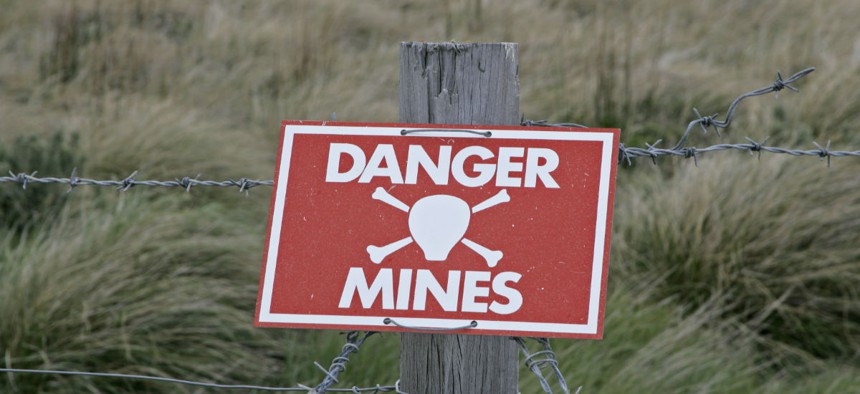The Road to Government Reform Is Filled With Landmines
Our institutions were created for a different era, but the moment is ripe for change.
President Donald Trump’s executive order requiring federal agencies to identify duplicative and unnecessary programs and improve services holds the promise of helping bring our government into the 21st century.
In many respects, we have institutions created for a different era. Our government provides exceptional services in some areas, but has not kept up with best-in-class private sector organizations in others. The moment is ripe for evaluating where we are and where we need to be in terms of the way government conducts business, manages taxpayer money and serves the needs of the American people.
Many presidents have tried to reform government. At best, they have enjoyed only partial success, typically falling far short of highly ambitious goals. The road to changing government, as Trump’s predecessors learned, is filled with political landmines, but there are some guideposts the new administration should follow if it hopes to make headway.
Engage Congress now: Little can change without the cooperation of Congress, where lawmakers have favored programs and constituencies. They have a vested interest in the status quo. For agencies to be merged or eliminated, or for programs to be scrapped or realigned, Congress must give its consent. President Obama in 2011 proposed combining 12 separate federal trade and export agencies into a newly constituted Commerce Department, while sending unrelated units to other parts of the government—a plan he said would help make America more competitive. This proposal received no support in Congress and suffered a quiet death.
The Trump administration has promised to obtain proposals from agencies within six months, provide a comprehensive reorganization plan to Congress in roughly a year, and then work with the relevant House and Senate committees to push forward with the reforms. Cabinet secretaries and their staff should begin meeting with their congressional overseers, including members of both political parties, long before any plan is drawn up to have frank conversations, to get advice, to incorporate their input and to help build consensus and support.
Move quickly to build agency leadership teams: The president has given wide latitude to his Cabinet to evaluate their programs, policies and operations, and this challenge offers an opportunity for bold thinking. The business acumen of the private sector leaders who have been tapped to serve in the new administration can be a real asset as the administration seeks creative solutions to boost efficiency and performance. The president must move quickly to nominate and win confirmation of deputy secretaries and other key members of the departmental leadership teams so they can work effectively with the Cabinet secretaries and experienced career executives in assessing what changes are needed and how best to accomplish them.
Focus on interagency coordination and cooperation: Solving problems requires agencies to work together, not as separate, disconnected entities. Few of today’s critical challenges, from cybersecurity to food safety and job training, can be solved by any single agency acting alone. With increasing frequency, serving the public demands interagency coordination—using the resources and expertise of multiple agencies to achieve a common goal. This is harder than it sounds, and requires the leadership of the White House and members of the Cabinet. The Government Accountability Office has identified dozens of actions federal agencies can take to eliminate the overlap, fragmentation and duplication of programs and services, and the Cabinet secretaries should use this information and collaborate with their counterparts to target areas where they can work together. This not only applies to implementing programs, but getting agencies to achieve economies of scale by sharing administrative services such as financial management, human resources, acquisition and information technology.
Go beyond the wiring diagram: Reorganizations are a partial solution, at best; they rarely solve every problem, and often lead to new challenges that require time and energy to generate real returns. When government fails or is inefficient, it usually has little to do with how an agency is organized and almost everything to do with the quality of the people and the performance, commitment and management skills of senior leaders.
Transforming government is hard work. Doing it right not only requires sound plans and organization, but the commitment and accountability from the White House, senior administration leaders and Congress to turn the promise of constructive change into tangible results.
Max Stier is president and chief executive of the Partnership for Public Service.








